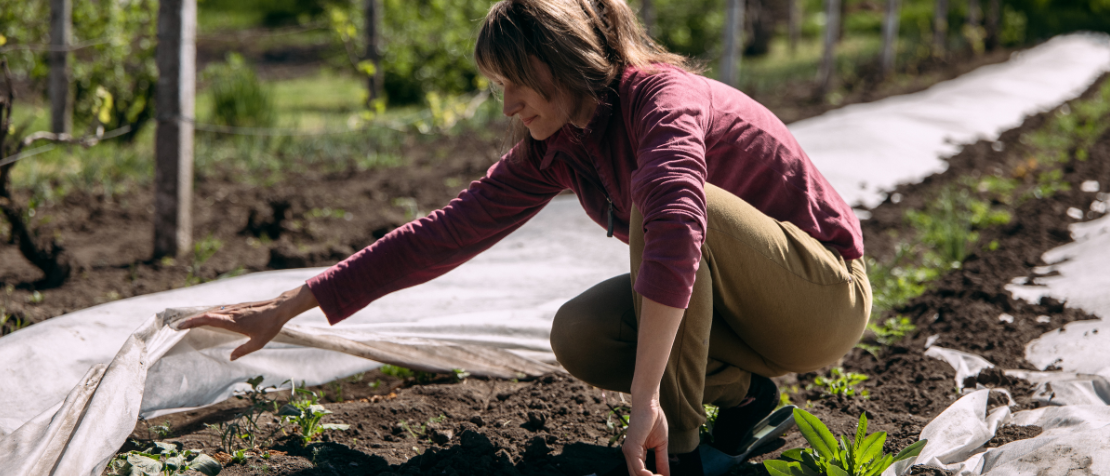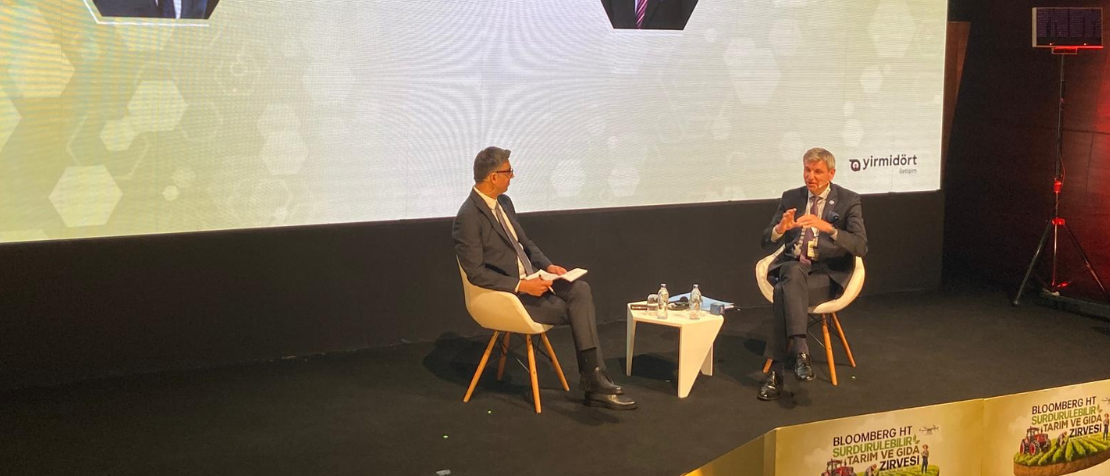FAO envisions a sustainable agricultural sector in Europe and Central Asia

©FAO/Anastasiia Borodaienko
There is an urgent need to adopt advanced technologies to tackle the challenges posed by climate shocks and water scarcity in agriculture and increasing pressure on smallholder farmers and rural economies. This was the message emphasized by Viorel Gutu, Assistant Director-General and Regional Representative for Europe and Central Asia of the Food and Agriculture Organizations of the United Nations (FAO) during a crucial session of the Bloomberg HT Sustainable Agriculture and Food Summit, held on 12 June in Istanbul, Türkiye. The session, ‘The present and future of agriculture,’ dissected the complex objective of building a sustainable future for the agricultural sector in Europe and Central Asia, with particular attention on water security, innovation and digital transformation, as well as smallholder farmers engagement.
When looking at the future of agriculture, FAO not only stresses the importance of transforming agrifood systems, but it also takes active steps to accelerate this process. In his intervention, Viorel Gutu pointed at the three main questions that need examination when talking about agrifood system transformation: how can we move beyond outdated models in agriculture? What does it take to nourish, not just to feed? How can we ensure that the agricultural sector is equipped to cope with finite natural resources?
With over 70 percent of freshwater withdrawals used globally for agriculture – and the percentage is even higher in many countries of Central Asia – it is clear that water resources are a basic foundation for food security. Climate change, pollution, and poor sanitation, as well as geopolitical tensions around natural resources, pose a remarkable challenge on a global scale, which require adequate water governance, climate-resilient technologies and transnational solutions. The topic of water security and sustainable water management for improved food security and nutrition holds such significance to this region, and was chosen as the main theme of the Europe and Central Asia Regional Overview of Food Security and Nutrition 2024 report, released in April this year.
The solution lies in technology and sustainable approaches, based on scientific background and innovation. Drip and precision irrigation can reduce water use by between 30 and 70 percent and can boost yields significantly, yet adoption remains below 10 percent in parts of the region. Protecting water reserves from pollution is another critical issue to protect human and animal health, as well as food production. Speaking on the Organization’s strategic direction, Gutu announced that FAO will strengthen its collaboration with the International Atomic Energy Agency (IAEA) to jointly develop innovative solutions addressing drought resilience and pesticide management.
Looking from the global perspective, Viorel Gutu reminded the audience that the global population is around 8 billion today and according to the forecasts, it will surpass 10 billion in 2050, while the agricultural land available remains the same.
Thinking more further ahead in time, FAO Assistant Director-General and Regional Representative noted estimates that food consumption will increase by 25 percent by 2050 and 50 percent by 2100. Today, one-third of food produced globally is lost or wasted, and out of all food waste (17 percent according to UNEP), 11 percent is wasted in households.
Gutu recommended to looking into solutions that allow us to produce more with fewer resources, as some resources, including water, are already scarce.

©FAO/Mehmet Izmir
Publication: The future of food and agriculture: Drivers and triggers for transformation
